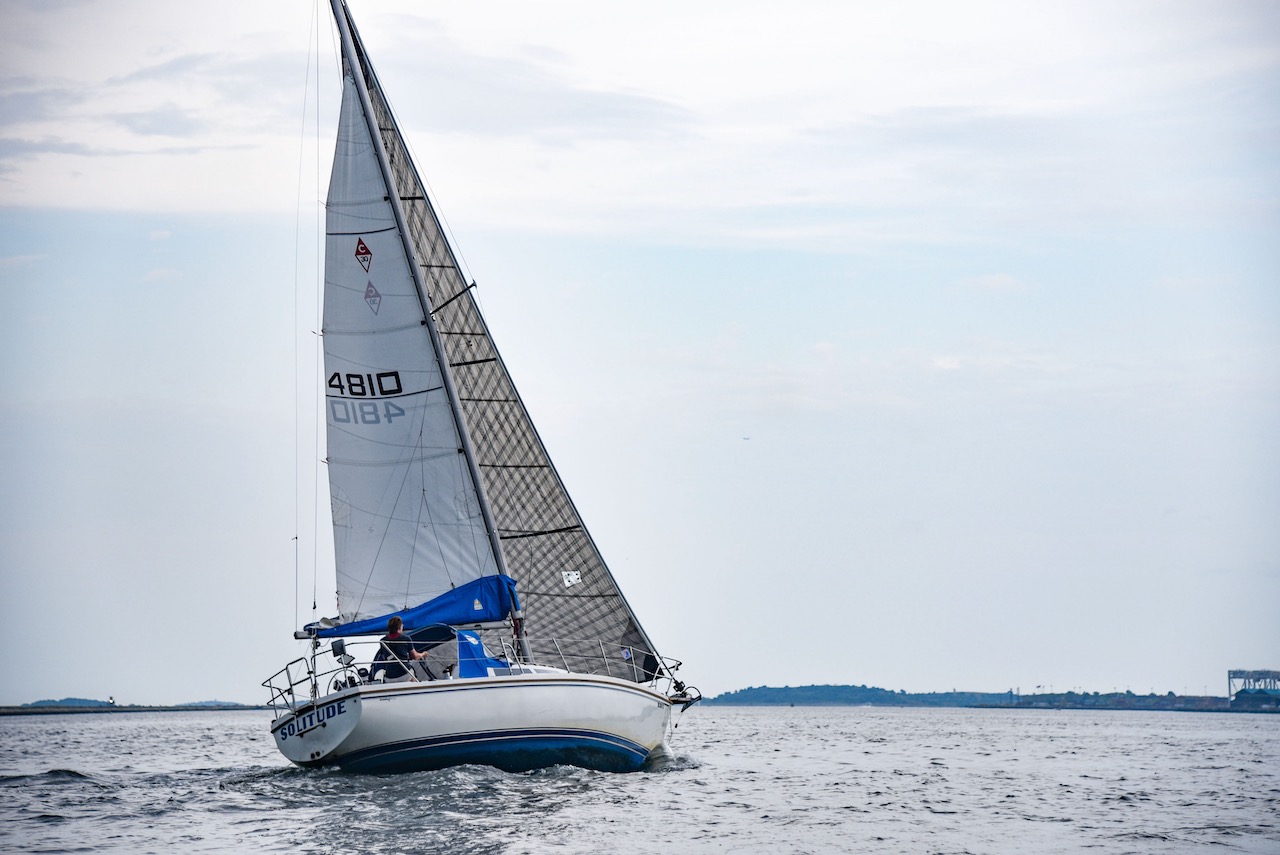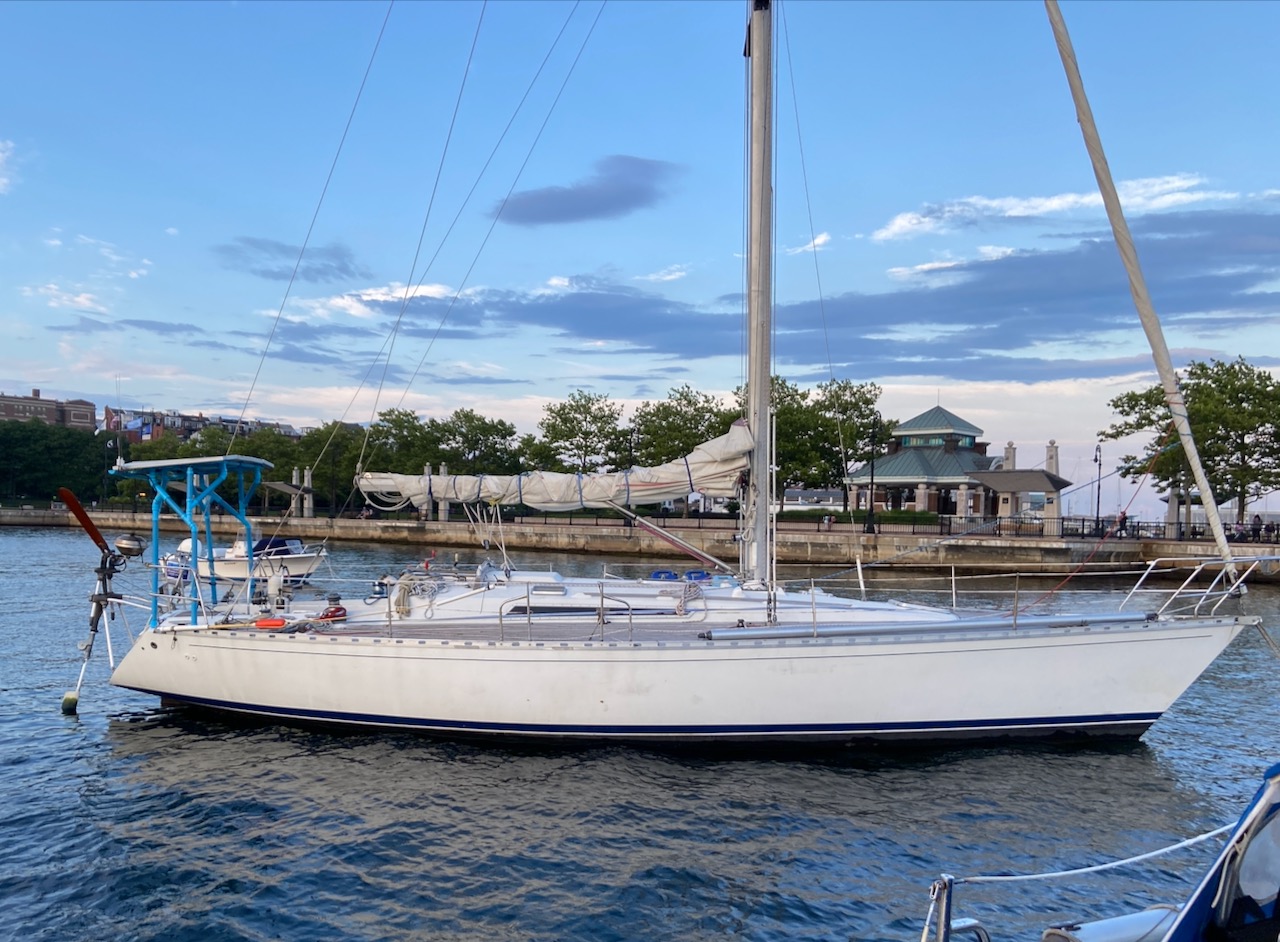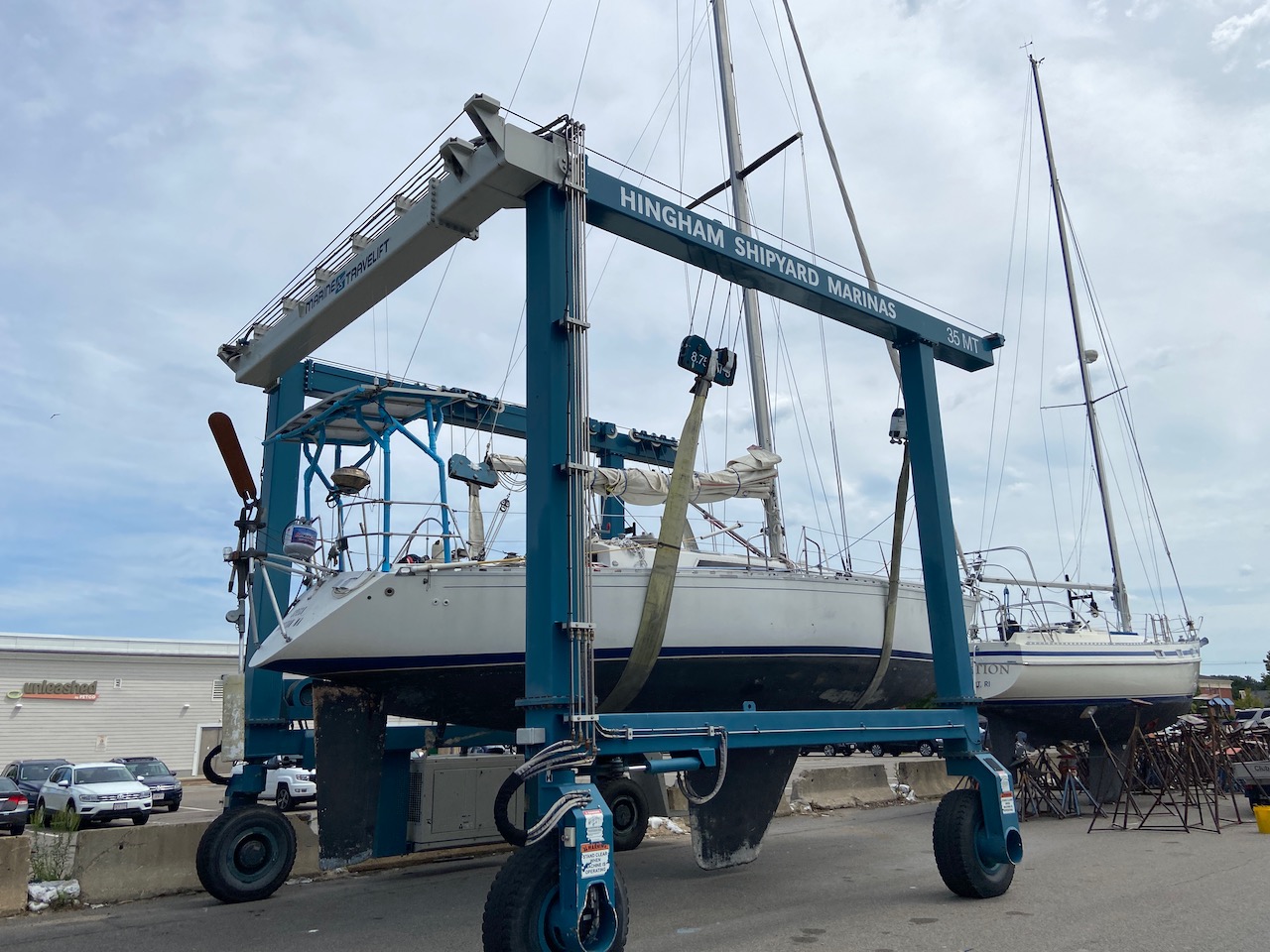I had Owned Solitude, my 1987 Catalina 30 for 4 years - and after sailing that little boat some 3,000nm over the course of those four summers, it was a boat I found myself quickly outgrowing.
It was when I found myself taking Solitude solo some 30nm offshore, regularly out in 30kt winds for shits ’n’ giggles, or PHRF racing, it was time to admit I was probably exceeding the “coastal cruiser” design brief of the boat .

The Catalina 30 was a great summer cruising boat, but not built for extended trips offshore, and we found it too small a platform to mount multi-week cruises from.
Thus the search began - quite casually at first, since I’m incapable of purchasing anything that I don’t deem a bargain.
Enter the spreadsheet - there’s always a spreadsheet. I scored a number of options I was presented on a number of axis:
- Ability to sail easily 5x nights per week - can the boat be sail ready & off the mooring in less than 5min?
(Speck was a 5/10) - Suitability as a good cruising boat - are the accommodations down below comfortable? Is there a big cockpit to hang out in at anchor?
(8/10) - Ability to eventually do a Fastnet Race - simple.
(7/10) - Ability to race single handed
(5/10) - Suitability to cross oceans (cruising the milk run)
(8/10) Is she pretty - because why spend all this money on a boat that doesn’t make the heart beat?
(8/10) - Is she strong as a brick shithouse?
(6/10)
Here is the full list of boats I had considered along the way:
 (If anybody wants to know specific real world costs on any of these, drop me a line)
(If anybody wants to know specific real world costs on any of these, drop me a line)
Most serious of these boats, to the point of viewing & extending an offer, was:
- A Pogo 10.50, which ultimately probably was the perfect boat for me - but I heard through the grapevine wound up needing $100k of work to get back sailing
- A J/130 which I eventually ruled out due to compromised, damp hull core - effectively making the boat worth negative money.
So with these two ruled out, I continued about my summer, happily sailing Solitude until along came Speck.
Enter Speck
I had followed the travels of Speck closely ever since two friends of mine, Byron and Dan discovered Speck sitting in a yard in rural New York, picked her up for a song, and extensively refit her for an around the world voyage.
Fast forward 18 months later, their circumnavigation was cut short by the pandemic,, and the boat was back in Boston, for sale once again for a song.

So how’d she score on my previous criteria?
She was tough to sail 5 nights a week in her existing format - no sail cover, and a bajillion lines to content with. I gave her 5/10.
She was nicely appointed down below - a bit dark perhaps, and cockpit a tad small compared to modern boats, but had a full suite of long-term cruising amenities. 8/10
A Fastnet Race? She’s an old IOR era racer cruiser, easy. A bit heavy to be competitive, but she’ll finish, and be comfortable. 7/10
Ability to race single handed - no tiller, no AP. Tough one, 5/10.
Crossing oceans? Well, she just came back from one - 8/10.
Pretty? As they come - teak decks and wedge deck ensure that, despite being a ticking time bomb. 8/10
Strong as a brick shithouse? Not quite - plenty strong, incomparable to any modern Beneteau - but she was still built to a budget, unlike the Swans she looks like. 6/10
Like all boats, Speck was a compromise. Were budget no issue, I’d be in a Pogo 12.50 or similar light displacement planing cruiser - but on the most important column of all, scoring the most points for the smallest $ sum, Speck scored off the charts.
I had long loved wedge deck Swans - but even to this day, they fetch incredibly healthy figures, and there’s little to be had for less than $100k.
Meanwhile, it’s no coincidence that when German Frers drew the First 42, he was also busy designing many Swans of the same era.
I’d always loved the Beneteau Firsts of the mid 80s. They had shown up in lots of “great offshore boat” lists from well-reputed authors like John Kretchmer and Morgans Cloud, and always had perked my interest.
Unlike the swans, there was no dreaded split-cockpit to -step- trip over when getting to the companionway.
She had a nice deep draft at 7ft 3”, but not too deep (the J/130 was almost 9ft - eek!)
This meant she would sail like a witch to windward, and combined with her hull shape, would be sea kindly in any kind of chop.
Pilot berths port and starboard, no longer fashionable in modern boats, make for a great boat to bring a bunch of friends sailing offshore for days on end.
Her deep keel leaves lots of room for ballast weight too - and her ballast to displacement ratio of ~45% makes her a stiff boat in a blow.
Lastly, Speck is the Tall Rig version, with a 55' I measurement. This gives her a sail area to displacement ratio of ~24 - meaning she can still keep moving in lighter winds when compared to other boats.
By racing standards, she’s an offshore tank - but as cruising boats go, she’s pretty light & nimble.
There were two big downsides. These boats might look like Swans, but in one key area, they are not. They were the beginnings of Beneteau’s journey into liner-built boats, where support stringers are encased in a liner before being molded to the hull.
Thankfully, the keel stringers are visible outside the liner on this boat. The previous owner had dropped the keel, reinforced the strings by adding several layers of glass, and reinstalled the bolts with new backing plates - so my worries were well alleviated here.
The other downside - I’ve always had a soft spot for teak decks, but therein lies the issue: Soft spots. Boat builders in the 80s (Swan included) hadn’t yet found how strong modern adhesives could be, so they are attached to the cabin top by thousands of tiny screw holes. Invariably, this could lead to leaks.
Some day, the time will come that every single screw will need to be removed and filled. Thankfully, after pulling some plugs, it was apparent there was plenty of depth of wood left on Speck - so for the time being, it’s just a maintenance heavy cosmetic feature.
So, after weighing the options I’d encountered before, I came up with a sum I’d be happy to part with for Speck. The owners (friends, so always a tricky one) countered, I accepted, and after ~10 days on the market, Speck was under offer.
I listed Solitude for sale the same week, for more than I had paid for her - but far less than I had put in as an owner, as is often the way with boats. She sold within 2 weeks, after a flurry of interest. Pandemic - everybody was buying boats.
Time for survey came along, and the surveyor’s closing remarks said it all for me - “This is a boat that’s gone around the world, and she’s ready to take off and do it again”.
There were only two “Recommendations”, items which an insurance company require the completion of before binding cover:
- A disused bronze through-hull was missing a cap fitting
- The propane regulator needed to have a pressure gauge

Survey done, Speck was mine.
Next post, I’ll detail the initial upgrades & cruises aboard Speck for the remaining 2 months of the 2020 season, before taking her offshore again taking her south for the winter.